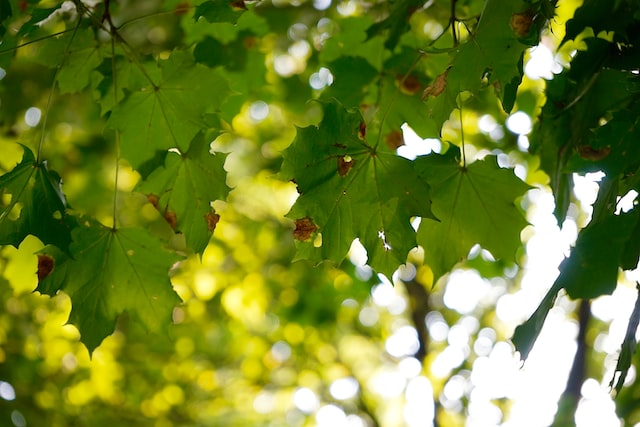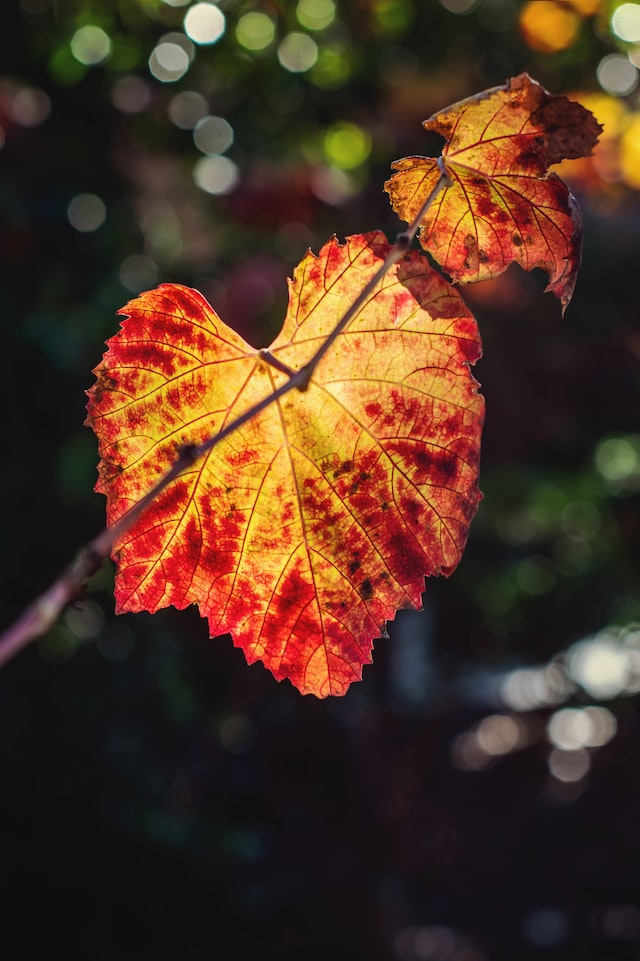Experience the Freshness of Grape Leaves Oil for Perfume at Scentopia Singapore
Grape Leaves: A Versatile and Delightful Ingredient with a Rich Heritage
Grape leaves, often overshadowed by their succulent fruit, have a history and range of uses that extend beyond the vineyards. From perfumes and fragrance to therapeutic oils, culinary delights, and even medicinal applications, grape leaves have proven to be a versatile and delightful ingredient. In this extensive article, we delve into the multifaceted world of grape leaves, exploring their cultural significance, culinary uses, and surprising contributions to perfumery, therapeutic oils, and fun crazy facts.
Cultural and Historical Significance of Grape Leaves
Grape leaves have a long history of culinary and cultural significance, especially in Mediterranean and Middle Eastern regions. In Greek and Turkish cuisines, stuffed grape leaves, known as "dolma" or "dolmades," are a beloved delicacy. The process of preparing and stuffing grape leaves has been passed down through generations, making it an integral part of cultural traditions and celebrations.
Grape Leaves in Perfumery and Fragrance: The Essence of Nature
While grape leaves are not a common note in mainstream perfumery, their fresh and green aroma has inspired niche perfumers seeking to capture the essence of nature. The fragrance of grape leaves evokes images of lush vineyards and adds a touch of natural greenness to certain perfume compositions.
Grape Leaves in Therapeutic Oils: A Subtle Soother
The essential oil derived from grape leaves is not widely used in aromatherapy, but it is occasionally employed for its subtle soothing properties. The oil's gentle scent can evoke a sense of tranquility, making it a possible component of relaxation blends.
Culinary Uses of Grape Leaves: A Gastronomic Delight
One of the most well-known culinary applications of grape leaves is in the preparation of stuffed grape leaves. The leaves act as a tender and flavorful wrapper, encasing a savory mixture of rice, herbs, and sometimes meat. This delicious dish is enjoyed across various cultures and is a testament to the versatility of grape leaves in the kitchen.
Medicinal Properties of Grape Leaves: A Hidden Treasure
Beyond their culinary use, grape leaves possess certain medicinal properties that have been appreciated for centuries. Some herbalists and traditional healers use grape leaves to make teas or tinctures, which are believed to have mild diuretic and antioxidant effects.
Fun Crazy Facts about Grape Leaves
Grape leaves, often celebrated for their culinary uses, have proven to be much more than just an accompaniment to grapes. From their role in perfumery, therapeutic oils, and medicinal applications to their cultural significance and fun crazy facts, grape leaves are a treasure trove of delights waiting to be explored. As we continue to savor their culinary delights, let us also appreciate their contributions to fragrances, therapeutic oils, and cultural heritage, making grape leaves a delightful and versatile ingredient with a rich and enduring legacy.
Grape leaves, often overshadowed by their succulent fruit, have a history and range of uses that extend beyond the vineyards. From perfumes and fragrance to therapeutic oils, culinary delights, and even medicinal applications, grape leaves have proven to be a versatile and delightful ingredient. In this extensive article, we delve into the multifaceted world of grape leaves, exploring their cultural significance, culinary uses, and surprising contributions to perfumery, therapeutic oils, and fun crazy facts.
Cultural and Historical Significance of Grape Leaves
Grape leaves have a long history of culinary and cultural significance, especially in Mediterranean and Middle Eastern regions. In Greek and Turkish cuisines, stuffed grape leaves, known as "dolma" or "dolmades," are a beloved delicacy. The process of preparing and stuffing grape leaves has been passed down through generations, making it an integral part of cultural traditions and celebrations.
Grape Leaves in Perfumery and Fragrance: The Essence of Nature
While grape leaves are not a common note in mainstream perfumery, their fresh and green aroma has inspired niche perfumers seeking to capture the essence of nature. The fragrance of grape leaves evokes images of lush vineyards and adds a touch of natural greenness to certain perfume compositions.
Grape Leaves in Therapeutic Oils: A Subtle Soother
The essential oil derived from grape leaves is not widely used in aromatherapy, but it is occasionally employed for its subtle soothing properties. The oil's gentle scent can evoke a sense of tranquility, making it a possible component of relaxation blends.
Culinary Uses of Grape Leaves: A Gastronomic Delight
One of the most well-known culinary applications of grape leaves is in the preparation of stuffed grape leaves. The leaves act as a tender and flavorful wrapper, encasing a savory mixture of rice, herbs, and sometimes meat. This delicious dish is enjoyed across various cultures and is a testament to the versatility of grape leaves in the kitchen.
Medicinal Properties of Grape Leaves: A Hidden Treasure
Beyond their culinary use, grape leaves possess certain medicinal properties that have been appreciated for centuries. Some herbalists and traditional healers use grape leaves to make teas or tinctures, which are believed to have mild diuretic and antioxidant effects.
Fun Crazy Facts about Grape Leaves
- Grape leaves are a symbol of abundance and prosperity in many cultures. In ancient times, they were often used as a sign of wealth and abundance.
- Grape leaves have been featured in various works of art, including paintings, sculptures, and literature. They are often depicted as a symbol of nature's beauty and bounty.
- In certain cultures, grape leaves are believed to bring good luck and protection. It is not uncommon to see grape leaves adorning doorways and windows to ward off negative energy.
- In some regions, grape leaves are used as a natural remedy for various skin conditions. The leaves are crushed and applied to the affected area to soothe irritation and promote healing.
Grape leaves, often celebrated for their culinary uses, have proven to be much more than just an accompaniment to grapes. From their role in perfumery, therapeutic oils, and medicinal applications to their cultural significance and fun crazy facts, grape leaves are a treasure trove of delights waiting to be explored. As we continue to savor their culinary delights, let us also appreciate their contributions to fragrances, therapeutic oils, and cultural heritage, making grape leaves a delightful and versatile ingredient with a rich and enduring legacy.
To experience augmented reality, please open the Facebook-app using QR code and point to the image below
Crafting Captivating Fragrances with Grape Leaves Oil
Grape leaves, also known as "vine leaves," are the leaves of the grapevine plant. They are commonly used in Mediterranean and Middle Eastern cuisine and are known for their delicate, slightly bitter flavor and tender texture.
Here are a few ways that grape leaves are used in food and cuisine:
It's important to note that grape leaves should not be consumed if they have been treated with pesticides or other chemicals.
Here are a few ways that grape leaves are used in food and cuisine:
- Stuffed grape leaves: One of the most popular ways to use grape leaves is to stuff them with a mixture of rice, herbs, and sometimes meat, and then roll them up and cook them in a tomato-based sauce. This dish is known as "dolma" in Mediterranean and Middle Eastern cuisine.
- Wrapping: Grape leaves can also be used to wrap fish or other meats before grilling or baking. The leaves help to keep the fish or meat moist and add a subtle, earthy flavor.
- Salad: Fresh grape leaves can be used in salads as a wrapping for a variety of ingredients such as feta cheese, vegetables, and meat.
- Tea: Dried grape leaves can be used to make a tea that is believed to have anti-inflammatory properties and to help with the digestion.
- Pickling: Some people pickle grape leaves in vinegar and salt. The leaves will be used as a garnish or as an ingredient in various recipes.
It's important to note that grape leaves should not be consumed if they have been treated with pesticides or other chemicals.
Unleash the Power of Natural Ingredients in Perfume Making
Grape leaves have been used in painting and other forms of art for centuries, as they have been an important symbol in many cultures. Here are a few examples of how grape leaves have been used in painting and culture:
- Ancient Greece: Grape leaves were a symbol of the god of wine, Dionysus, and were often depicted in Greek art and mythology. They were also used in the decoration of pottery and other objects.
- Renaissance: During the Renaissance, grape leaves were often used as a decorative element in paintings and frescoes, particularly in religious art.
- Impressionism: The Impressionist movement in art, which emerged in the late 19th century, often featured grape leaves as a symbol of the French countryside and the pleasures of rural life.
- Modern art: Grape leaves continue to be used in modern art as a symbol of nature, growth, and fertility.
- Symbolism: Grape leaves are also considered a symbol of fertility, the cycle of life and death, and the success of the harvest.
- Literature: Grape leaves appear in many literary works, often as a symbol of abundance and the pleasures of wine and food.
- Architecture: Grape leaves are often used as decorative elements in architecture, particularly in Mediterranean and Middle Eastern countries. They are used in the decoration of courtyards, fountains, and other outdoor spaces.
Discover Scentopia Singapore's Grape Leaves Oil Collection
Grape leaves have been used for therapeutic purposes for centuries, particularly in Mediterranean and Middle Eastern cultures. Here are a few examples of how grape leaves are used for therapeutic purposes:
- Anti-inflammatory: Grape leaves contain compounds that are believed to have anti-inflammatory properties. They are often used to help reduce inflammation and swelling in the body.
- Digestion: Grape leaves are believed to help improve digestion and can be used to treat stomach and intestinal problems such as diarrhea and constipation.
- Wound healing: Grape leaves have been used to help heal wounds, reduce scarring and improve skin health. The compounds in the leaves are believed to have antibacterial properties which can help to prevent infection.
- Anemia: Grape leaves are rich in iron and are believed to help prevent and treat anemia.
- Rheumatism: Grape leaves have been used to treat rheumatism and other forms of joint pain and inflammation.
- Diuretic: Grape leaves can be used to promote urination and help remove excess fluids from the body.
- Cancer: Some researchers have suggested that grape leaves may have anti-cancer properties and may be useful in the prevention and treatment of certain types of cancer.
Elevate Your Perfume with the Essence of Fresh Grape Leaves
Grape leaves have a subtle, fresh, and slightly earthy scent. The scent is not as strong as the scent of grapes, but it is still distinct and recognizable. The scent is more pronounced in fresh leaves and is less noticeable in dried leaves.
The scent of fresh grape leaves can be described as green and vegetal with hints of grass and hay. They also have a slightly bitter aroma which is caused by the tannins present in the leaves.
The scent of dried grape leaves is more muted, and it is often described as musty, woodsy, and earthy. The scent is similar to that of other dried herbs, and it is often used as an ingredient in potpourri, sachets, and other fragrant mixtures.
In perfumery, the scent of grape leaves is not commonly used. However, it can be found in some natural perfumes and perfumes that are marketed as being inspired by nature or the countryside. The scent is often blended with other green and floral scents to create a fresh and natural-smelling fragrance.
It's worth noting that essential oils can be extracted from the grape leaves, but they are not commonly used in perfumery because the scent is not strong enough, and they are not as popular as other botanical ingredients.
The scent of fresh grape leaves can be described as green and vegetal with hints of grass and hay. They also have a slightly bitter aroma which is caused by the tannins present in the leaves.
The scent of dried grape leaves is more muted, and it is often described as musty, woodsy, and earthy. The scent is similar to that of other dried herbs, and it is often used as an ingredient in potpourri, sachets, and other fragrant mixtures.
In perfumery, the scent of grape leaves is not commonly used. However, it can be found in some natural perfumes and perfumes that are marketed as being inspired by nature or the countryside. The scent is often blended with other green and floral scents to create a fresh and natural-smelling fragrance.
It's worth noting that essential oils can be extracted from the grape leaves, but they are not commonly used in perfumery because the scent is not strong enough, and they are not as popular as other botanical ingredients.
Aromatherapy Oils: Nature's Gift for Perfume Enthusiasts
Grape leaves are rarely used as a primary scent in perfumes, but they can be found in some perfumes that are marketed as being inspired by nature or the countryside. Some perfumes that might feature grape leaves as an ingredient are:
- L'Artisan Parfumeur's "La Chasse Aux Papillons" ("Butterfly Hunt"): This perfume has a green, floral scent and features grape leaves as one of its notes.
- Jo Malone's "Grapefruit": This cologne features a fresh, citrus scent and grapefruit as the main note, but it also has a mix of green and floral notes that could include grape leaves.
- Miller Harris' "La Fumée": This perfume has a woodsy, smoky scent and features grape leaves as one of its notes.
- Le Labo's "Santal 33": This perfume has a woodsy, smoky scent and may include grape leaves as part of its green notes.
- L'Occitane's "Verbena": This perfume has a fresh, citrus scent and may include grape leaves as part of its green notes.
Join Scentopia, Sentosa's latest tourist attraction wonderful orchid scent crafting, fragrance tour, bridal shower or corporate team building which includes perfume making onsite and offsite, beach activities and more. We also serve primary school learning journey, secondary students and pupil on industrial excursions. Know more about our orchids perfume bar or therapeutic orchid scents and other wellness aromas. Conatct Perfume workshop or book a scent crafting session here.






